Steam locomotives are artifacts of a bygone era. There was once a time when steam ruled the world, but now that’s largely the job of diesel. But steam didn’t go down without a fight. Back in the 1940s, the Norfolk and Western class J represented the apex of steam passenger trains. These locomotives weren’t just stunning, streamlined works of art, but were also the most powerful of their kind. Today, just one is left, and I have great news because you can ride it right now.
The transition between steam power and diesel was an interesting period here in America. During the 1930s, railroads like the Union Pacific had realized that they had power demands that were greater than could be satisfied by the era’s locomotives. Steam engines churned out incredible power, yet they weren’t enough. Diesels were rising in popularity at the time, but were still somewhat in their infancy, and couldn’t meet the power demands of these railroads, either.
Technically, these railroads had solutions to these problems, as existing locomotives could be multiplied on the same train to add more power as needed. Running trains with lines of locomotives cost these railroads a ton of money in operational, labor, and fueling costs. This sent multiple railroads on a quest for more power. Union Pacific’s efforts are perhaps the most famous, as that railroad constructed a series of increasingly crazy locomotives, from the gargantuan Big Boy and the girthy Centennials to the absurd Gas Turbine-Electric Locomotives.
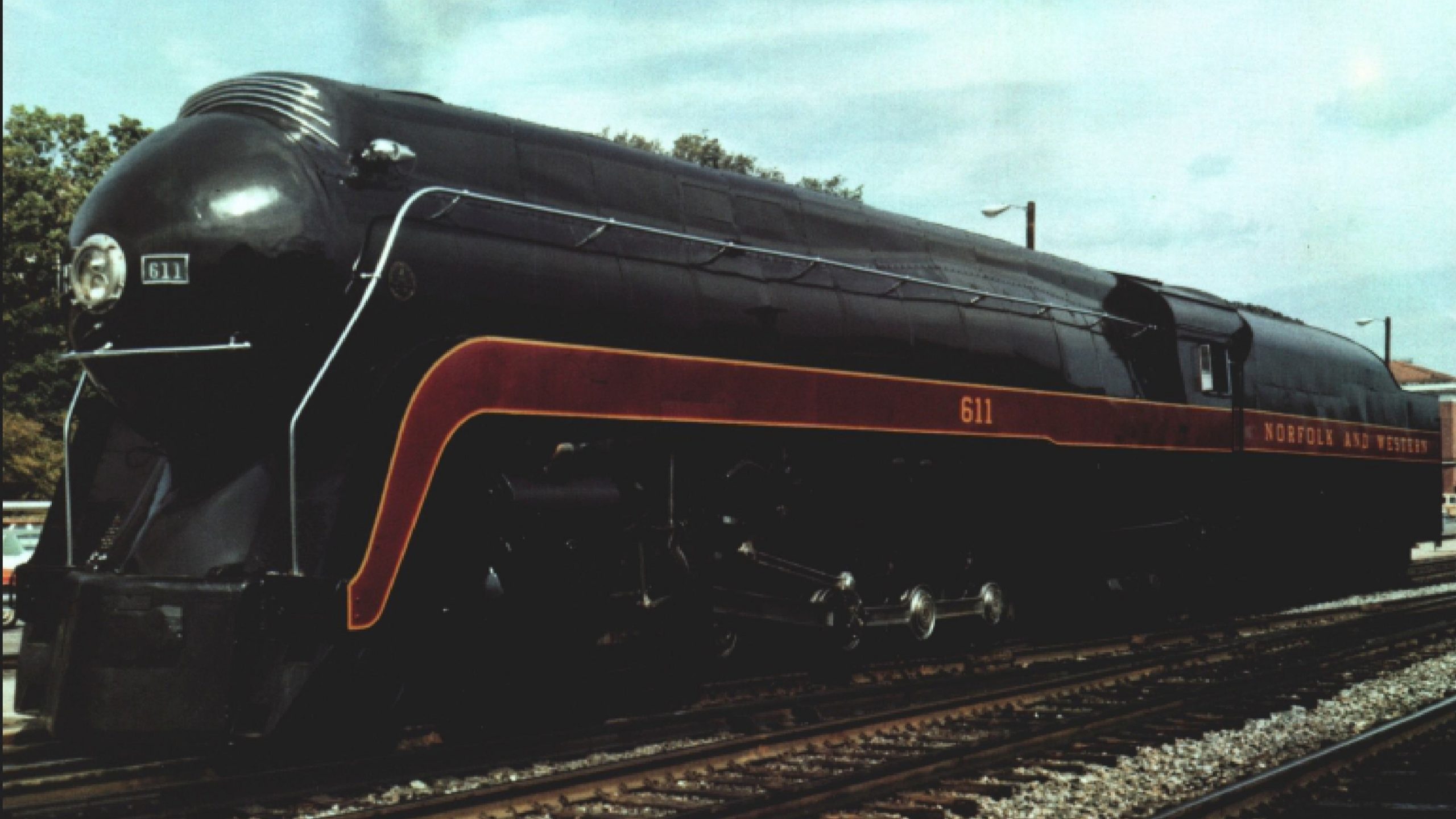
The Norfolk and Western Railway, which was headquartered in Roanoke, Virginia, faced its own problem with wanting more power. Its solution was to build a class of the most powerful 4-8-4 (four leading wheels, eight driving wheels, four trailing wheels) steam locomotives. This is the Norfolk and Western class J, and it’s a ton of muscle wrapped in a gorgeous package.
Black And Red
The Norfolk and Western Railway (N&W) used to be a pretty big deal. From the Virginia Section of the American Society of Mechanical Engineers (ASME):
The beginnings of the N&W date back to 1833, when 41 residents petitioned the Virginia General Assembly to incorporate a “Rail Road” from Petersburg to City Point, on the James River. The first train was operated on the nine mile City Point Rail Road on September 7, 1838. The second railroad involved in what became the N&W system was the South Side Railroad which was merged with the City Point Road and opened in 1854 for 123 miles between Petersburg and Lynchburg. Then came the Virginia & Tennessee, opened from Lynchburg to Bristol in 1856. A continuous rail link between Norfolk and the state of Tennessee was completed in 1858 when the Norfolk & Petersburg Railroad connected those two Virginia cities. During the Civil War each line remained autonomous and each sustained repeated damage.
After the war, the Virginia & Tennessee, the South Side, and Norfolk & Petersburg were rebuilt and consolidated by William Mahone. Mahone named the corporation the Atlantic, Mississippi and Ohio. At this time, the offices and shops of the new line were located in Lynchburg, Virginia. The Norfolk and Western Railroad was named in 1876 when Clarence Clark, a Philadelphia banker, purchased the financially troubled A M & O. The name “Norfolk and Western” was chosen to calm the fears of Norfolk citizens that Clark intended to divert east-west rail traffic to Philadelphia.
Since that time, the N&W has expanded into a national transportation system extending from Norfolk to Chicago, and Buffalo to Kansas City. The N&W was renowned for its huge steam locomotives, many of which were built in their Roanoke, Virginia shops. The N&W was the last major railroad to use steam locomotives regularly, discontinuing their operation in 1960.

The ASME continues that, in 1983, the Norfolk and Western merged with the Southern Railway, creating Norfolk Southern. In recent times, Norfolk Southern has been in the news because it wants to merge with the Union Pacific, which would create the first U.S. transcontinental railroad company.
Streamliner trains were all the rage in railroading in the 1930s, with perhaps the most famous being the Zephyrs, the diesel-electric trainsets that looked like nothing else built before or since. But diesels didn’t get to have all of the fun, as aggressive streamlining and Art Deco design had been applied to electric and steam trains, too, making for some of history’s most spectacular-looking trains. The streamliners also helped railroads operate during the Great Depression.
Yet, as the book Norfolk & Western’s Powhatan Arrow by Thomas Dixon notes, the Norfolk and Western had initially ignored the streamliner era. This is because, as the book notes, passenger trains were responsible for less than five percent of Norfolk and Western’s income, and its breadwinners were coal trains.

However, changing times forced the railroad’s hand. The book Norfolk and Western Six-Eleven – 3 Times A Lady, Revised Edition by Timothy Hensley and Kenneth Miller notes that, by the late 1930s, N&W’s passenger trains, which were pulled by K2 and K2a “Mountain” 4-8-2 locomotives, were beginning to fall behind rising passenger demand. The locomotives had been built between 1919 and 1923, and, reportedly, N&W thought it was time for a change.
What happened next is interesting. Railroads were quickly turning to diesel power, but N&W didn’t do that. Like the Union Pacific and its Big Boy steamer, N&W decided not just to build another steamer, but to build a steam train that represented the apex of steam technology. This would be a train engineered to prove to America that steam wasn’t ready to die just yet.
The Class J
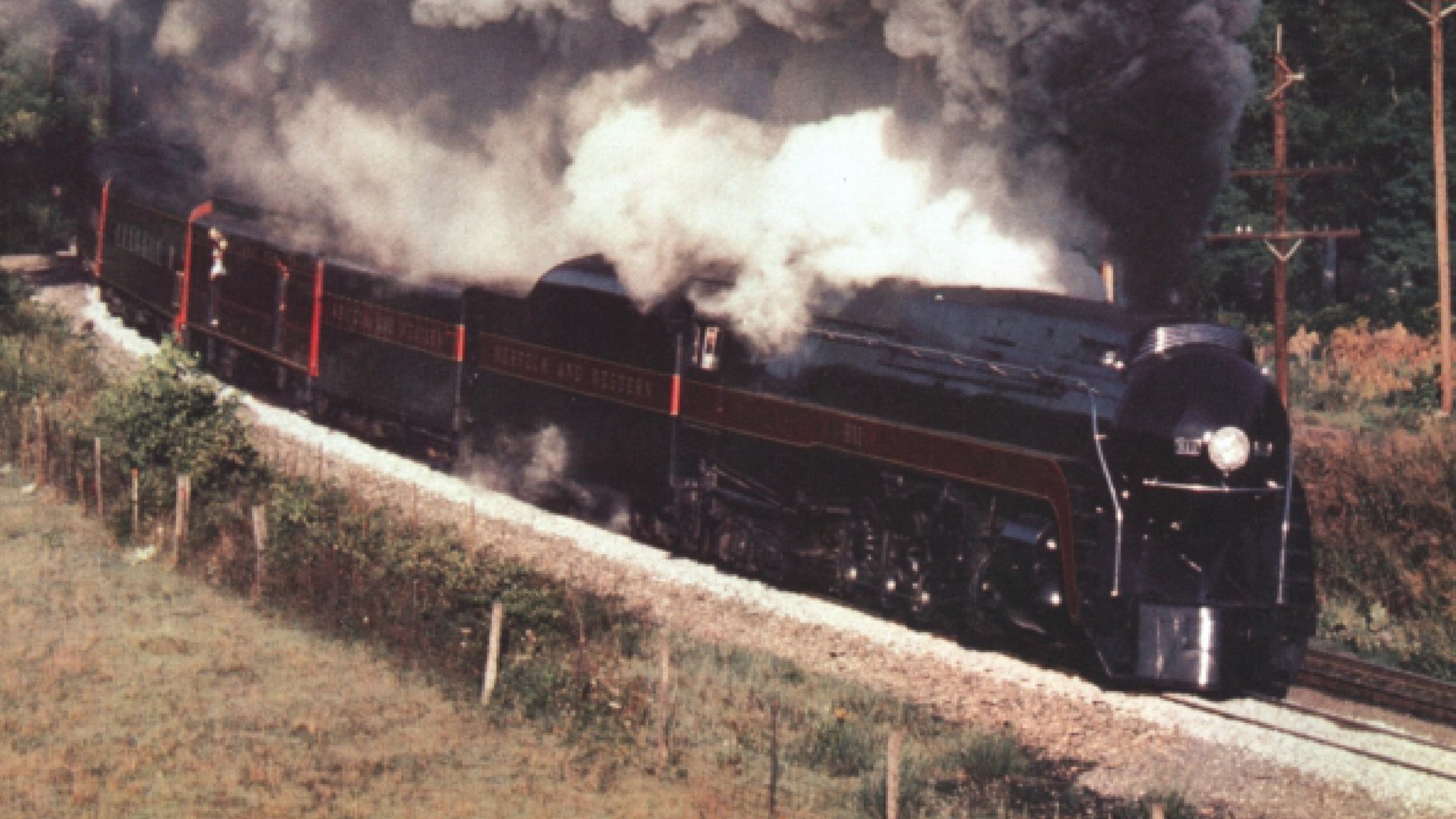
ASME says that the railroad’s new locomotive, the class J, was designed in 1940 under a team of talented engineers and designers, including mechanical engineer H. W. Reynolds, locomotive designers G. P. McGavock and C. H. Faris, chief draftsman V. C. Glaze, draftsman M. W. Faville, tool supervisor F. C. Noel, and many others. According to ASME, Franklin C. Noel was the designer of the J’s streamlining. Apparently, Noel’s design went through a few iterations as N&W railroad brass thought the first one to be too plain and the second one to be too fancy. The third iteration, which made the train look like a bullet, won over the railroad. Apparently, Noel’s wife added her own touch to the design, giving the locomotive a red stripe and some gold trim.
The engineering put into the class J was impressive. Remember, this all happened in 1940! From ASME:
The “J” is the most advanced and most powerful 4-8-4 passenger locomotive ever built in terms of actual drawbar horsepower at speeds up to 50 MPH. Built during an age when other lines were abandoning steam for diesels, many design features incorporated by the N&W represent the pinnacle of steam locomotive technology. The “J” was designed for a maximum tractive effort of 80,000 pounds. […] [M]aximum drawbar horsepowers near 5100 were expected at speeds from about 40 mph to 80 mph. This performance was realized […] under controlled tests an average drawbar horsepower of 5,028 was realized at a speed of 41.03 mph. This performance has not been surpassed, even by modern single unit diesel locomotives. Under test conditions, the “J” propelled a 15-car, 1015-ton passenger train at 110 mph on level tangent track. Performance in regular service was equally impressive, with speeds on straight sections of track reported to approach 100 mph.
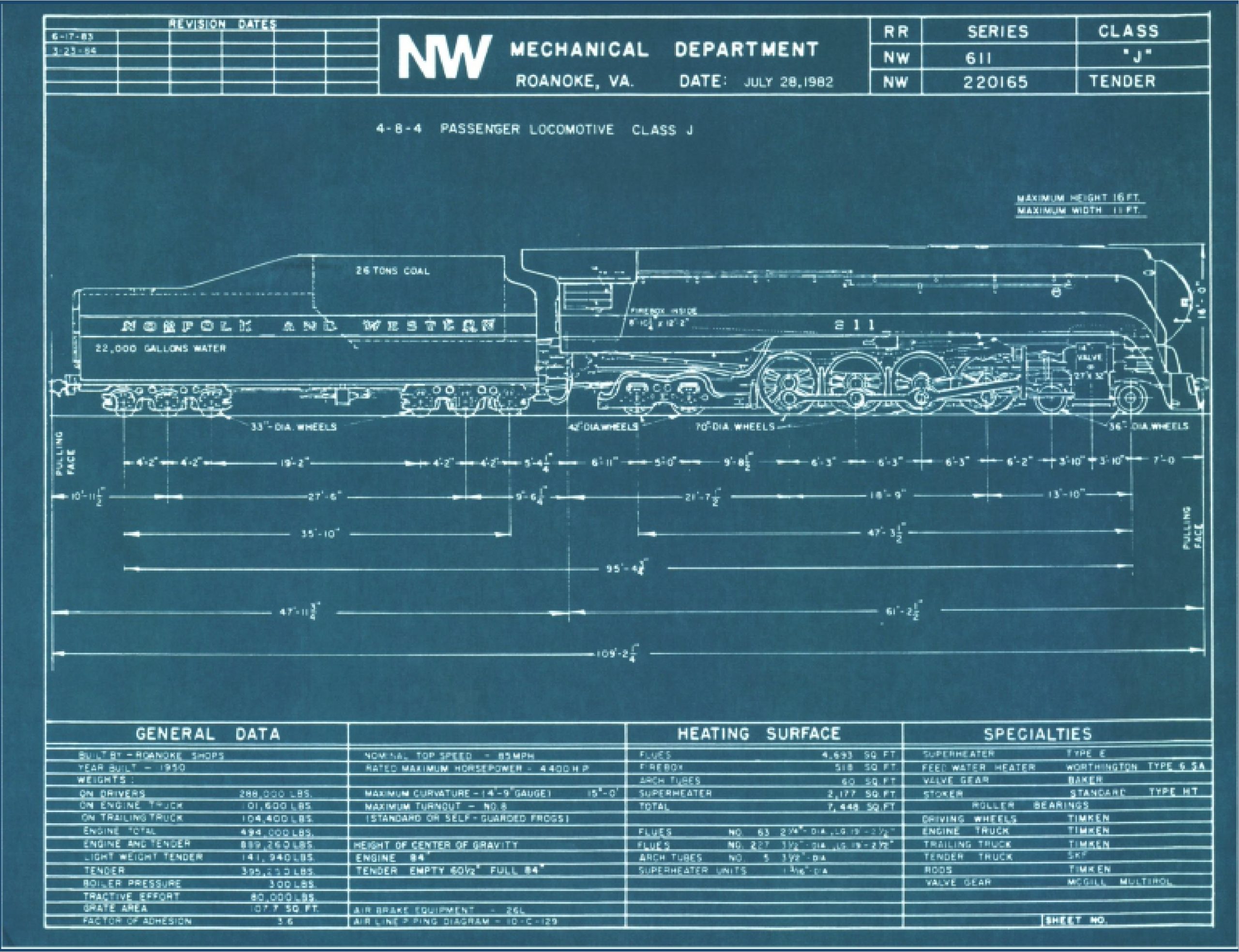
The “J” was mounted on a rigid steel frame cast by General Steel Castings Corporation. This huge onepiece casting included not only the complete locomotive frame, but the two cylinders, the mounting brackets for certain auxiliaries, and an extended support for the cab. Air compressors were mounted on the pilot beam area in front of the boiler. Hollow sections cast integral with the frame were designed to serve as reservoirs for compressed air used to operate the air brakes and signaling devices.
The “J” was designed with comparatively small 70-inch drivers, allowing the riveted boiler to be unusually large in diameter without exceeding the clearance and height limits of eastern railways. The “J” had the longest combustion chamber of any 4-8-4 and the largest firebox on a 4-8-4 burning eastern bituminous coal.
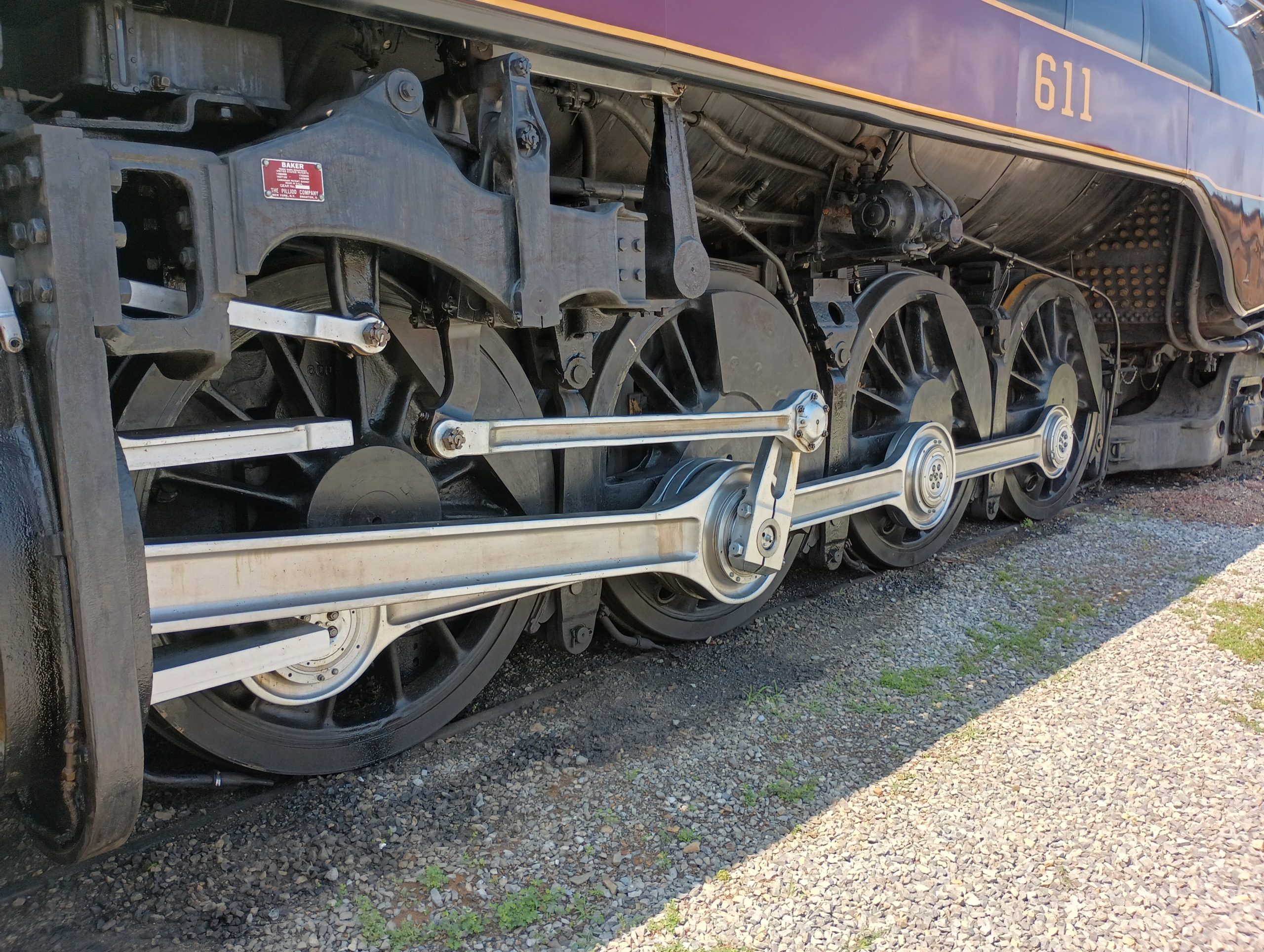
The ASME continues by saying that the locomotive was built to run over 100 mph, despite having 70-inch driving wheels that were normally considered to be too small for the application. Engineers got around that by making the leading and trailing trucks extremely rigid, the use of lightweight rods, and precise side-rod-and-driver counterbalancing. ASME says that, theoretically, the class J was so well-balanced that it could thunder down the rails at 140 mph without causing massive damage to the tracks.
The tenders feeding the class Js initially held 52,000 pounds of coal and 22,000 gallons of water. Later, they would grow to 70,000 pounds of coal and 20,000 gallons of water. The locomotives measured 109 feet and 2 inches in length, and loaded with its tender, it weighed 872,600 pounds. As noted earlier, these locomotives punched out 80,000 pounds of maximum tractive effort and produced more than 5,000 drawbar horsepower between 40 mph and 80 mph.
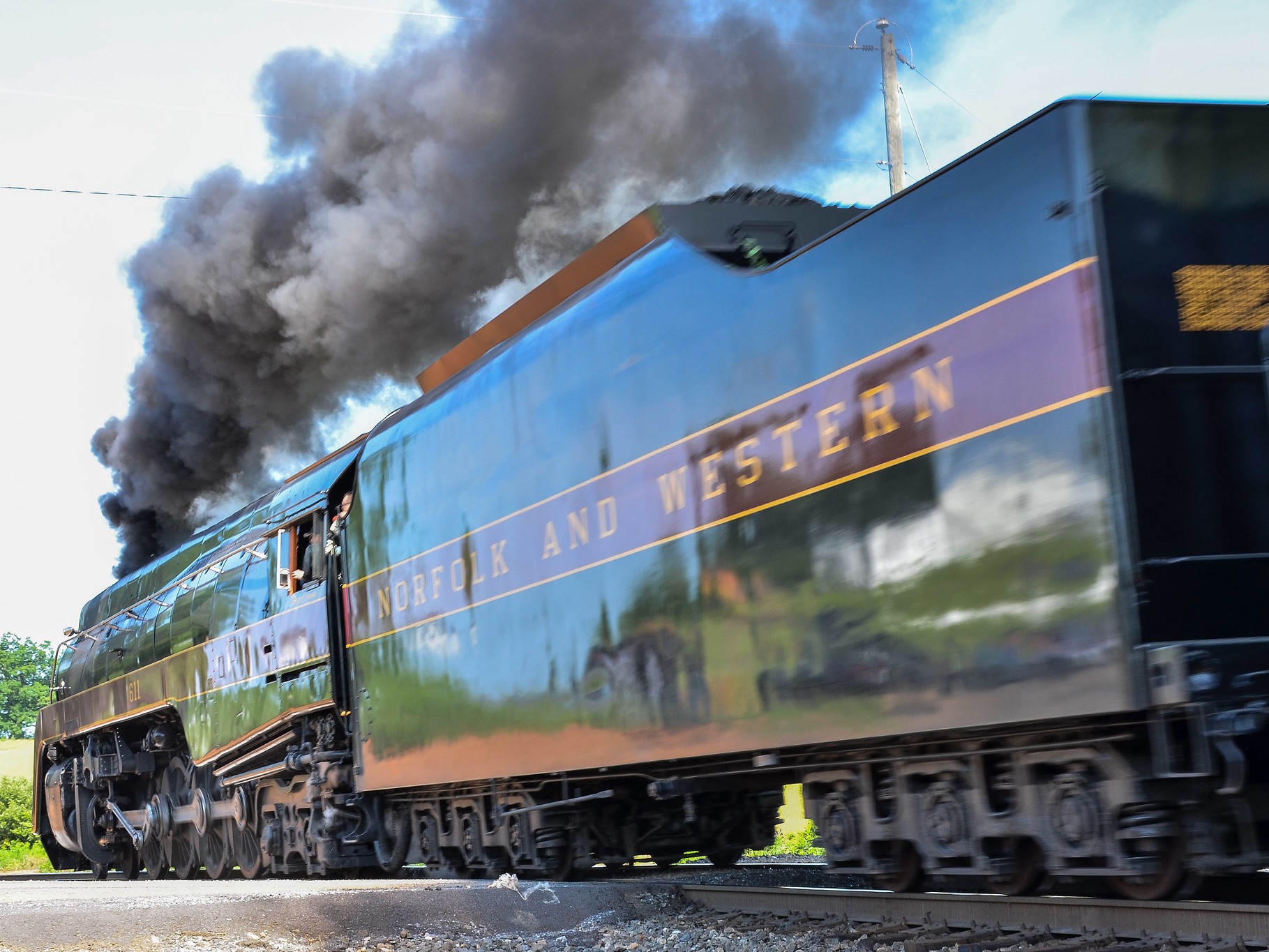
ASME continues by saying that the locomotive had a mechanical pressurized lubrication system, which automatically lubricated 220 points on the locomotive and had to be refilled every 1,300 miles. Grease fittings were used on an additional 72 points. Needle, roller, and tapered roller bearings were used throughout the locomotive, and reportedly, 11 of the 14 class Js rolled more than five million miles with only two roller bearing failures.
In other words, N&W’s engineers built not just an insanely powerful and beautiful locomotive, but one that was reliable, too. Another neat detail about the class J is that it was designed to be a streamliner from the start. This is important because some streamliners of the era were typical locomotives with streamliner dress, which made maintenance harder as crews would have to work around the decorative panels. Since the class J was a streamliner from the start, this wasn’t as much of a problem.
The first class J was finished on October 20, 1941, and a total of 14 were built, with the last rolling out of the Roanoke Shops in 1950. The locomotives were built for between $167,000 (in 1941 dollars, or $3,837,162 in 2025) and $251,544 (in 1950 dollars, this would be $3,467,839 in 2025). A handful of locomotives, Nos. 605 through 610, were built in 1943 without their streamlining. This was because of the rationing of materials during World War II. N&W would equip these locomotives with streamlining a year later.
Hitting The Rails

As the Norfolk & Western’s Powhatan Arrow book notes, N&W’s streamliners were the perfect trains for a post-World War II America. Railroads expected passenger train traffic to remain heavy after the war, and placed orders for new equipment. There was only one problem, as once wartime restrictions had lifted, builders just couldn’t keep up with demand.
N&W found itself in a great position, as the class J locomotives, while being around five years old, were still considered to be at the cutting-edge of steam power. So, in a smart publicity move, N&W took a class J and paired it to five-year-old lightweight coach cars. These cars were refurbished, and the train was put into service in 1946 as the Powhatan Arrow, America’s first post-war streamliner.

Using a class J meant that N&W was able to cut travel times between Norfolk, Virginia, and Cincinnati, Ohio, by over three hours. Norfolk & Western’s Powhatan Arrow notes that the train was advertised as being able to complete the 696.6-mile run in 15 hours and 45 minutes, faster than the Chesapeake & Ohio’s time between Norfolk and Cincinnati of 17 hours and 45 minutes. The book also notes that part of the time difference was due to C&O having to ferry passengers from Norfolk to a waiting train at Newport News before they could actually depart.
The class J locomotives, which would also run the Pocahontas and Cavalier trains between Norfolk and Cincinnati, would go on to become N&W’s flagship. Whenever N&W produced marketing materials, these speeding steamers were the headliners. The class Js would also haul Southern Railway’s Birmingham Special, Pelican, and Tennessean trains around Virginia, as well.
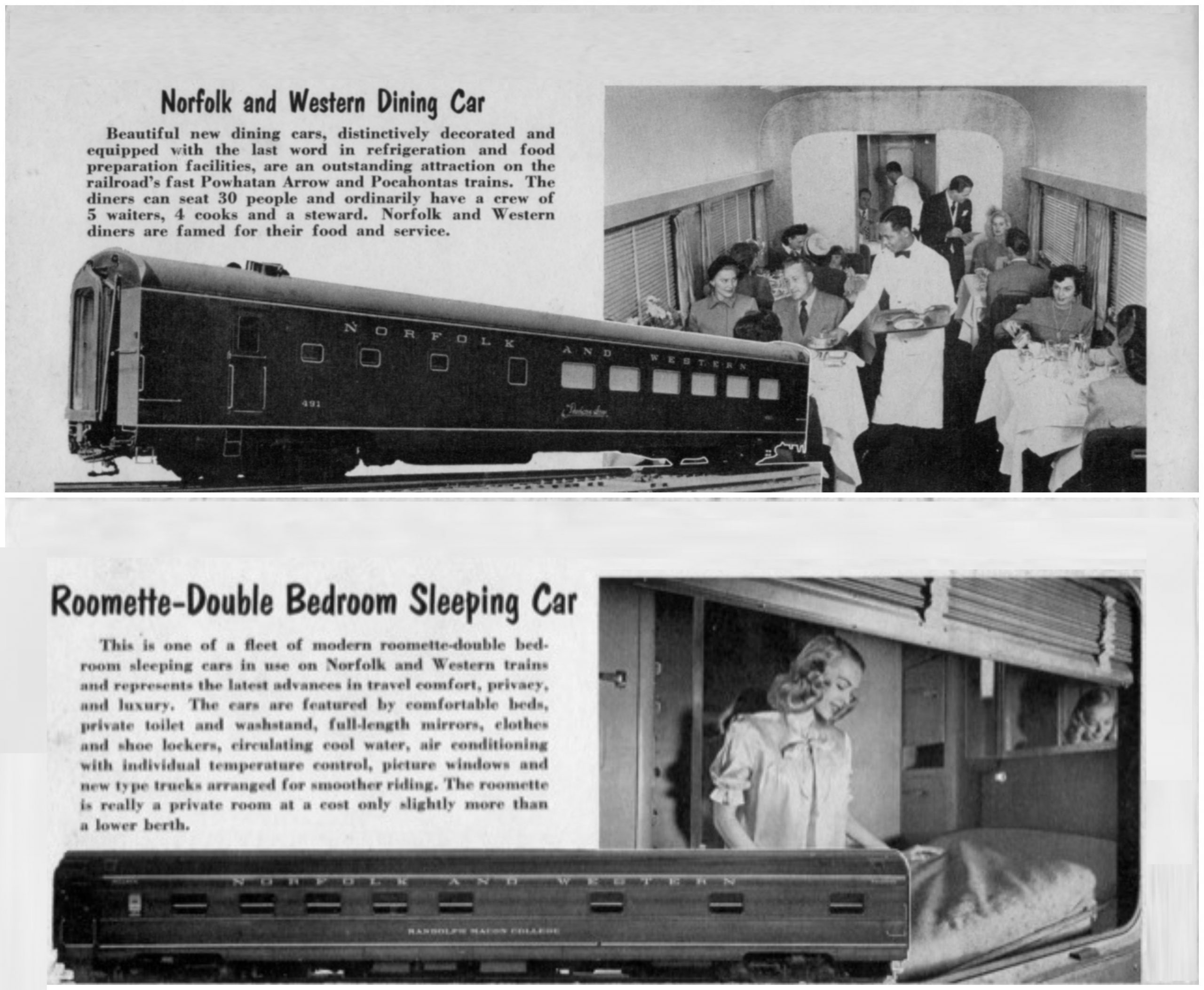
Inside the coach cars, passengers got to enjoy clean lines, metal decor, and a luxury ride. There were combination bar and lounge cars, dining cars, and swivel seating so that groups could congregate and hang out during a train ride. These cars were painted in the railroad’s red and were adorned with gold trim, which made them a brilliant match for the already striking locomotives.
According to ASME, the class Js were reliable enough to run 15,000 miles a month, and several copies racked up three million miles over their operating lives. ASME notes that this was impressive because these trains often ran on short and mountainous routes. Ultimately, the class Js would pull N&W’s flagship trains for a full 18 years. Reportedly, there were times when class Js stopped to load and unload passengers, and there were more people at the station who just wanted to look at the train rather than actually ride it. Here’s what an advertisement for the Pocahontas looked like:
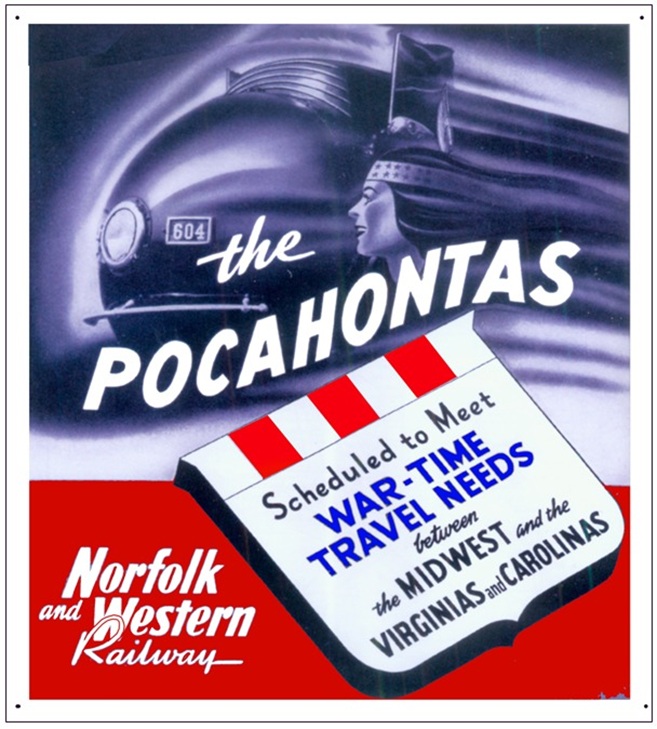
While the class Js represented the best and brightest of steam, they only delayed the inevitable. Diesel-electric technology eventually caught up and surpassed steam, and N&W eventually had to move on. The class J passenger trains were replaced with diesels in 1957 and 1958, and nearly all examples were then scrapped in 1959. At the end of N&W’s steam program, these trains found themselves assigned to pulling freight trains. It was a bittersweet end, as the class Js ended up being some of the last steam locomotives to be built in the U.S. for passenger use, and the N&W was one of the last major railroads to use steamers for passenger trains.
The Last Class J
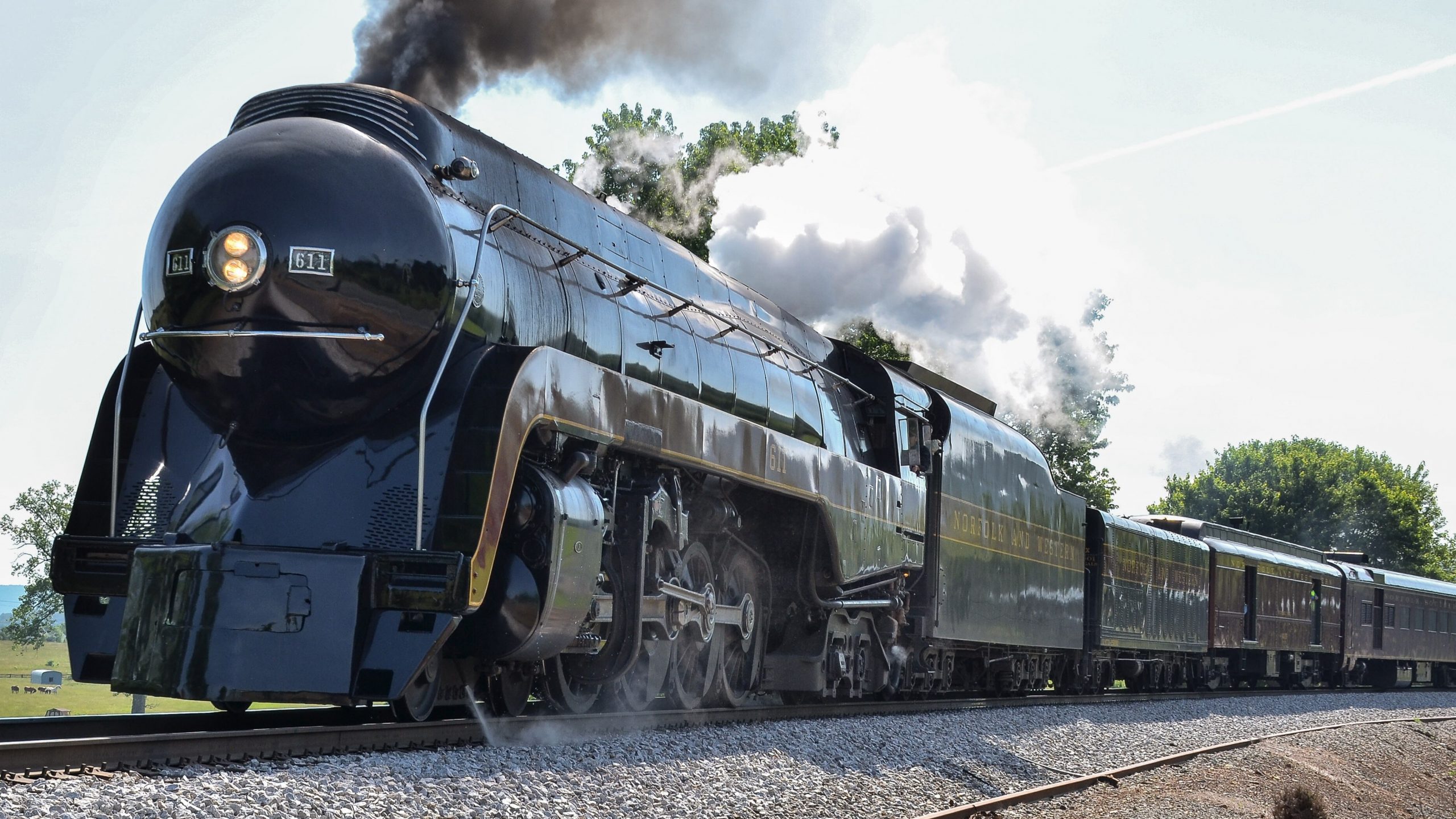
The only survivor was No. 611, which was built in May 1950 and donated to the Roanoke City Council in 1962. It would go on display at the Roanoke Transportation Museum (now the Virginia Museum of Transportation) in 1963. The Virginia Museum of Transportation continues:
Due to rising operating costs, the N&W decided to switch to diesel locomotives in 1957. Due to its good condition, No. 611 was selected to pull the company’s “farewell to steam” excursions in October 1959. Once 611’s duties were officially over, her fate was uncertain. Several people, including famed N&W photographer O. Winston Link and native Roanokers Graham and Robert Claytor, reached out to President Stuart Saunders to save 611 from the scrapper’s torch. Saunders agreed to keep 611 as a reserve steam generator at the East End Shops until the flues in her boiler ran out. She was then donated to the new Roanoke Transportation Museum (later the Virginia Museum of Transportation) for static display. She sat outside in the elements waiting for the chance to steam again.
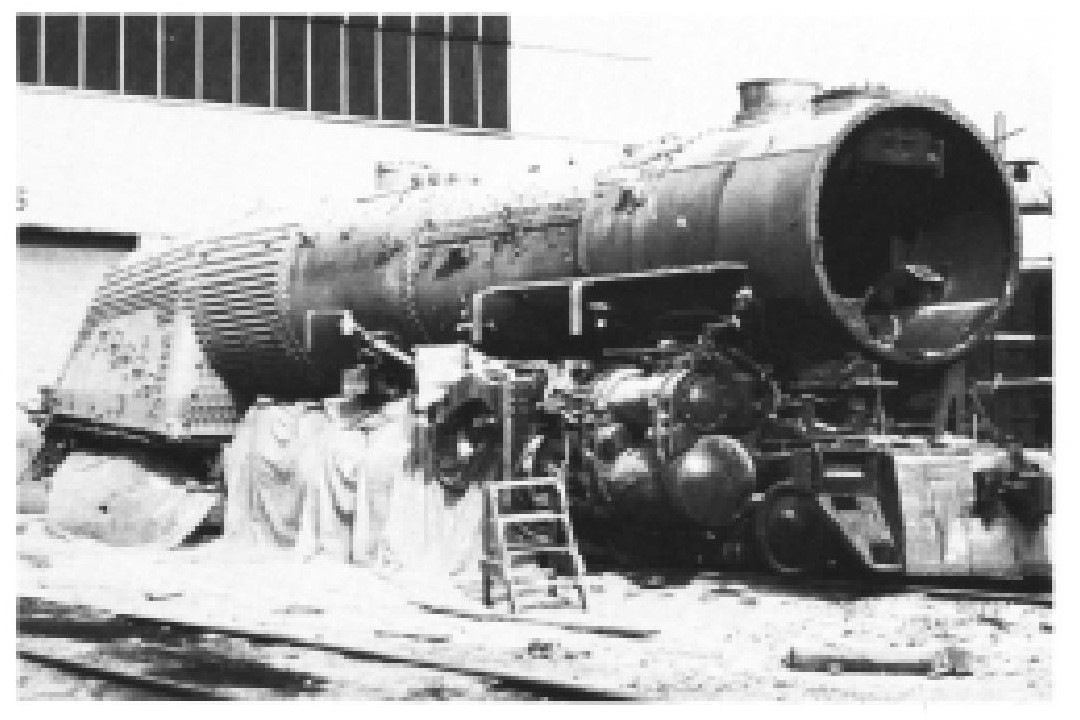
That chance came in 1981 when Norfolk Southern president Robert Claytor sent 611 to the Norris Steam Shop in Birmingham, Alabama. 611 became the star of the Norfolk Southern steam program pulling excursions throughout the eastern United States. While previously limited to the N&W’s system, 611 was able to travel as far south as Florida, as far north as New York, and as far west as Chicago. For twelve years she traversed the mainlines recreating the golden age of American railroading and inspiring a new generation of steam fans. Norfolk Southern decided to end the program in 1994. 611 returned to her hometown of Roanoke, Virginia to once again serve as a static display. Once again, she sat and waited.
Norfolk Southern’s new “21st Century Steam” program brought steam back to the mainline for employee specials and public excursions. Thousands of people hoped that 611 would return to the her rightful place at the head of a passenger train. In 2013, the Virginia Museum of Transportation announced the “Fire Up 611!” initiative to investigate the possibility of returning No. 611 to excursion service.
Since its second restoration in 2015, the 611 has been in operation every single year except 2024, and it’s considered to be one of America’s steam legends right alongside the likes of Union Pacific’s Big Boy. The American Society of Mechanical Engineers declared the locomotive a National Historic Mechanical Engineering Landmark in 1984. This was followed up with the locomotive becoming the official state steam locomotive of Virginia in 2017, added to the Virginia Landmarks Register in 2023, and, finally, added to the National Register of Historic Places in 2024.
Take A Scenic Ride To Nowhere In Particular

I have great news, too, because if you want to ride behind the 611, your next chance is actually right now. No. 611 will be running every weekend until October 26 as the Shenandoah Valley Limited, and it sounds like a sweet ride:
Riding the Shenandoah Valley Limited behind the iconic Norfolk & Western Class J No. 611 steam locomotive is a thrilling immersion into railroading’s golden age. There is nothing quite like the whistle of 611’s steam engine echoing across the Valley. It’s like a call from another era, evoking memories of a time when steam ruled the rails and every whistle was a promise of adventure.
As the train leaves Goshen and climbs the North Mountain grade, passengers will witness the steam locomotive’s raw energy and grace, as it powers up inclines and rounds curves with billowing steam and rhythmic chuffs. The route winds through the George Washington and Jefferson National Forests, past working fields and farms of western Augusta County towards Staunton.
Along the way, passengers can marvel at a uniquely American landscape amidst the fall color show. After a brief pause near historic Staunton, where the train reverses direction, a vintage diesel engine will take over for the return leg of this memorable journey. This round-trip journey spans approximately 50 miles and lasts about 3.5 to 4 hours, with the 611 reaching speeds of up to 40 mph on the mainline.
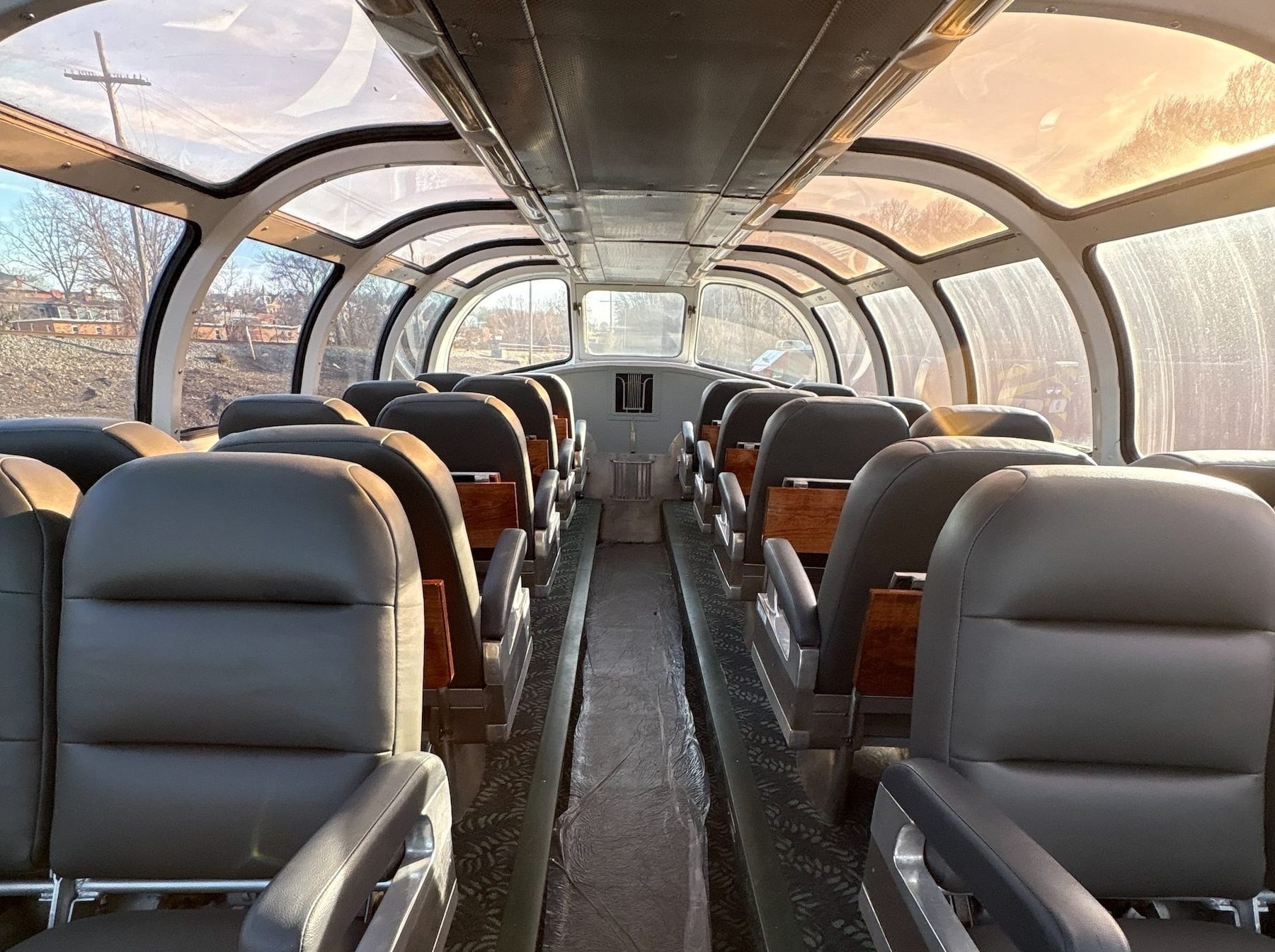
Apparently, the train will be pulling a huge number of cars, so you have plenty of choices to choose from. You can get a ride in a lounge car, a dome car, a car with booths, a car with tables, regular coach cars, or fancy coach cars. Prices start at $128.00 for a seat in the standard coach and rise up to $318 to ride in a dome car. The Virginia Scenic Railway says there are two excursion trains every day on Friday, Saturday, and Sunday until October 26. So, you have some time to get to Virginia!
If you do make it out there, you’ll get to ride one of the coolest locomotives of all time. Here’s a great video of the train in motion:
Something that I have always loved about the stories of the last steam locomotives is that they were all amazingly ambitious. The engineers who penned and built these locomotives were tasked with showing the world that steam still had a place, and in doing so, built mechanical marvels.
I suppose you could argue that these locomotives were basically a dead end in the face of diesel-electric locomotives, and maybe they were, since their railroad eventually converted to diesel, anyway. But for a time, these were the coolest things on the rails. They were arguably some of the most beautiful, as well, because not even some of the hottest trains of today can match the majesty of an old steamer. So, if you’re looking for a fun train to nowhere this fall, head out to Virginia. I’m sure you won’t regret it.






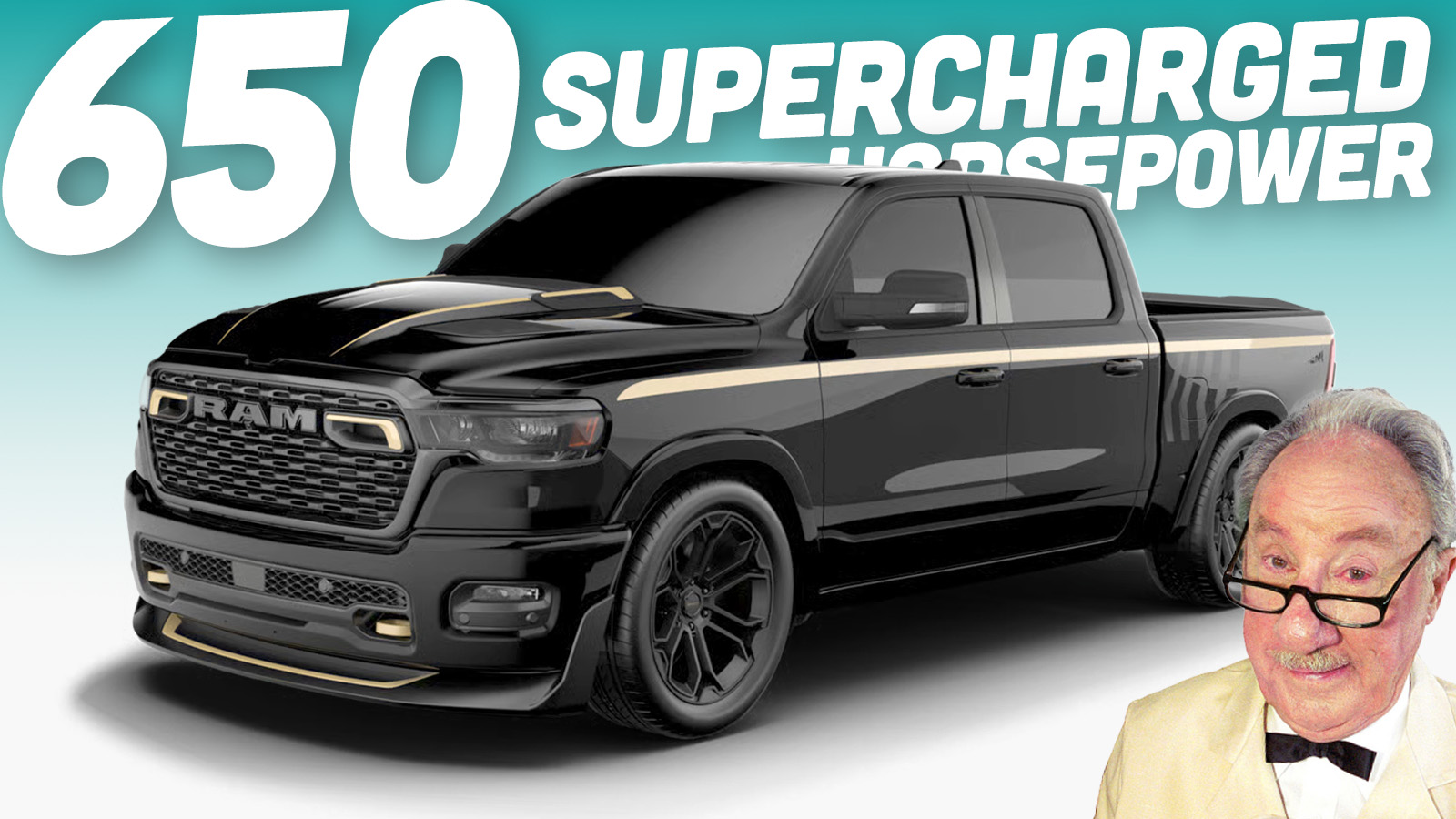

As a Stooges fan I once considered ‘Raw Power’ as a knuckle tattoo but didn’t want to explain RAWP OWER to people over and over. I am glad I thought that one through.
I always thought this was one of the best looking steam locomotives ever, underneath Loewy’s S1. I sure wish steam locomotives were still a thing; in 2009 or so I was in a boatyard in downtown Milwaukee working on my first boat project with a few buddies, and then we heard it. A steam whistle. We all dropped the tools in the boat and ran a few blocks away to hear it come in, with the ground shaking, the drivers dripping with moisture and oil, the smell of grease mixed with the humidity of steam. It literally felt like we were all 8 years old, running excitedly to see a steam engine roll up into modern(ish) times. Later we snuck onto the Hiawatha passenger cars, and made our way to the observation/beavertail car, and just hung out for a while, with the lights off and nobody around. Eventually a guy was clearing all the cars and found us, realized we weren’t vandalizing anything, and told us to have fun and leave whenever. So cool.
One of my earliest memories dates from the Fall of ‘59 when I was not quite three and my grandfather came and got me and took me to a rail overpass in rural Virginia. There we waited with a small crowd until the mighty 611 came thundering below on one of its last demo runs before retiring. I was seated on my grandfather’s shoulders and the locomotive’s exhaust billowed up around us in a hot white cloud as we leaned over the bridge rail to watch it pass. I’ll never forget the shaking of the ground, the steam, and the piercing train whistle salutes of that leviathan as it thundered below. I don’t have many distinct memories from that age, but who could forget that?
That’s awesome, thank you for sharing it!
When the salesman for Lima Locomotives (the company that invented the superpower steam locomotive concept} was asked if they sold to Roanoke and the N&W, it’s said that he smiled and replied, “What could we show them about locomotives?”